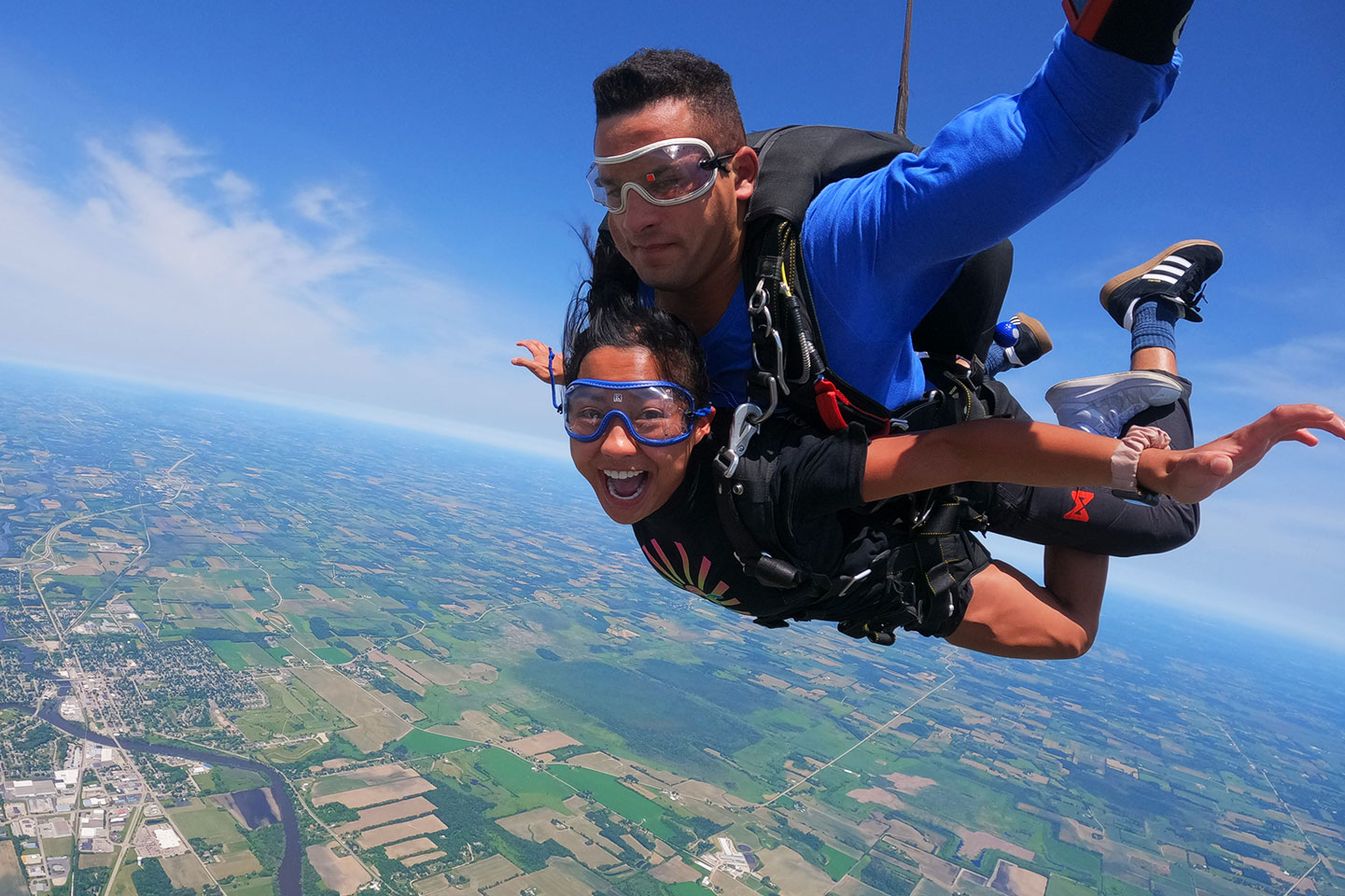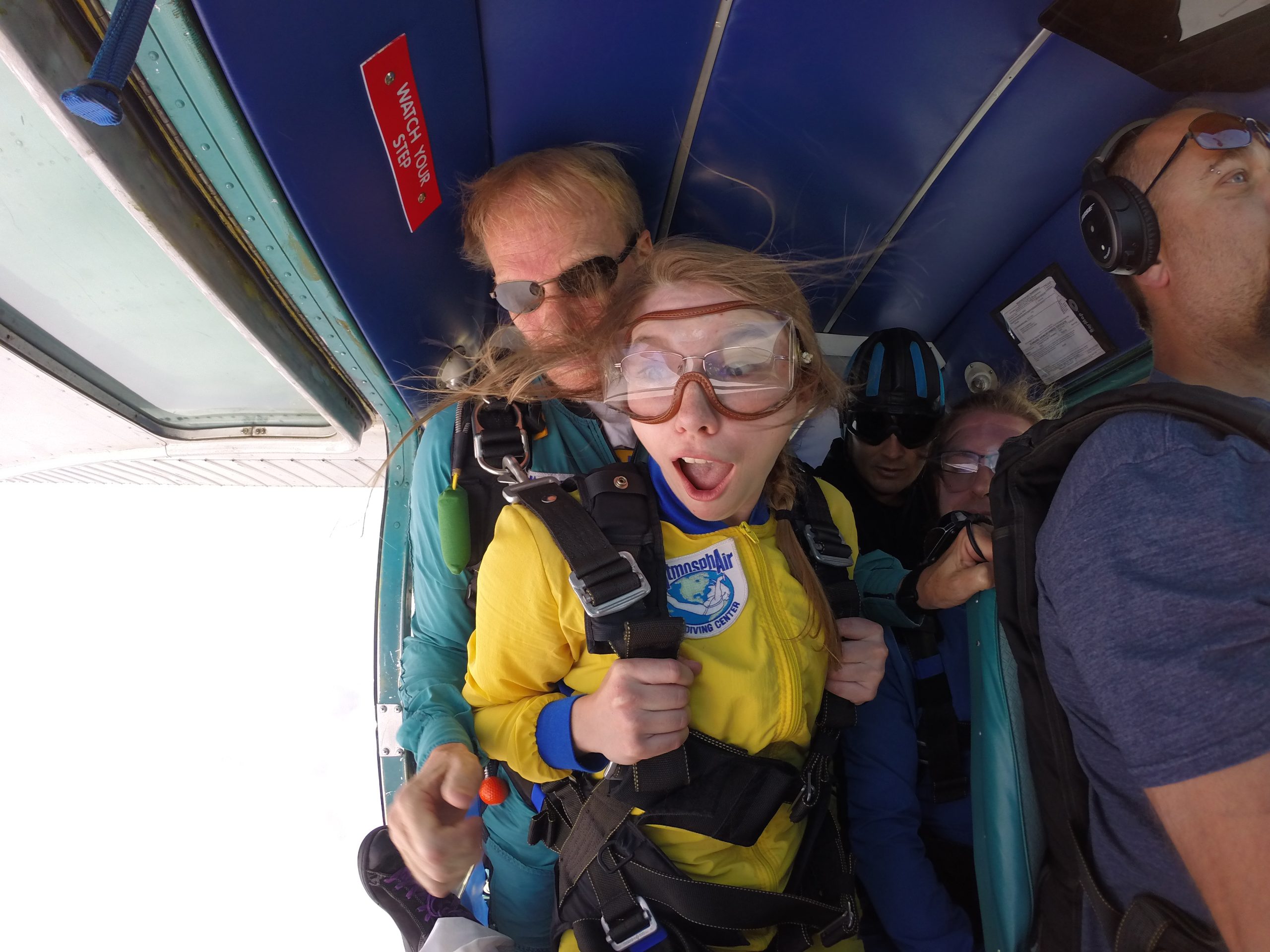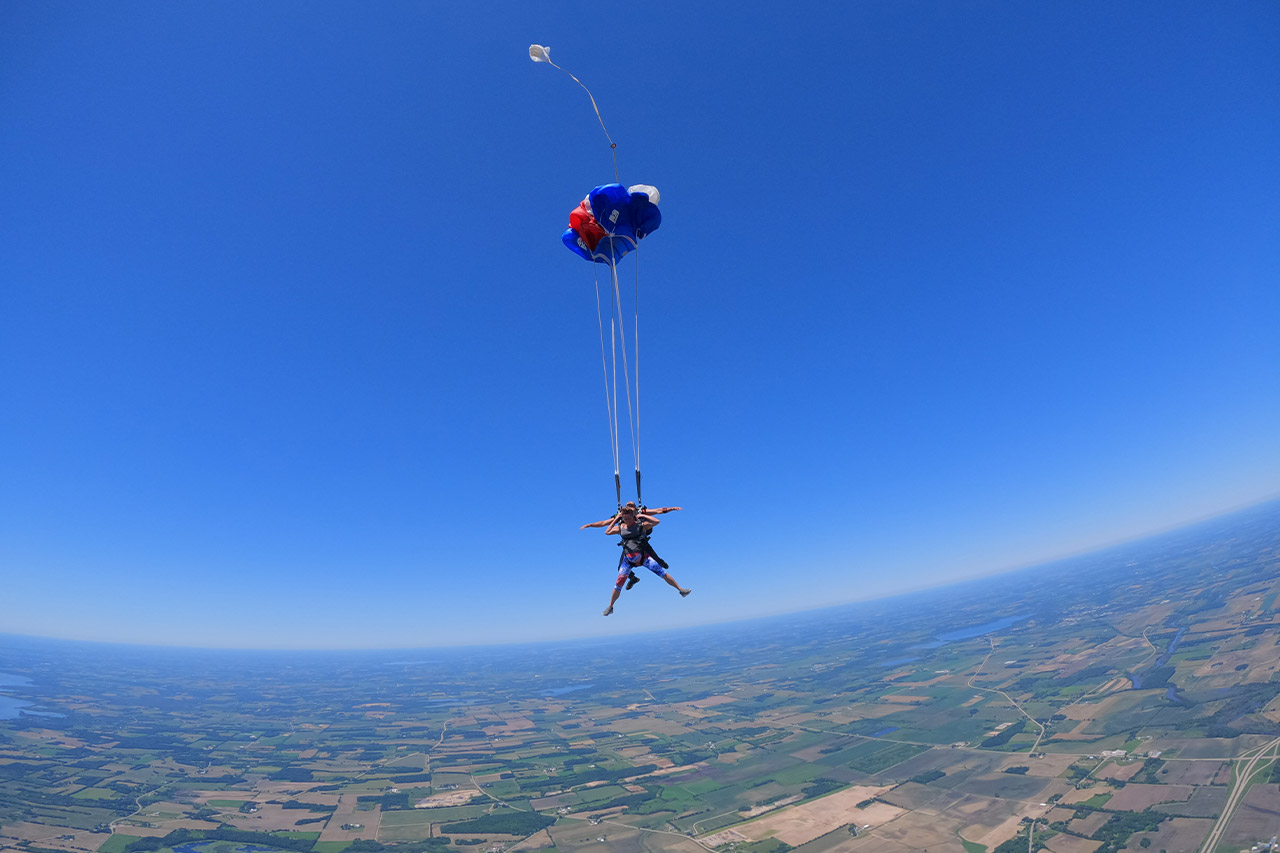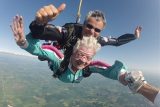What Is The Average Skydiving Height?
General
Posted by: Wisconsin Skydiving Center 6 months ago
How high is a parachute jump? While the average skydiving height is 10,000 feet, the range of typical skydiving exit altitudes is usually between 8,000 and 14,000 feet.
Aircraft type, dropzone ground level elevation, FAA regulations, and jumper experience all dictate how high you jump from when skydiving. Let’s get into the specifics and commonly asked questions about normal skydiving heights!

How High Is A Parachute Jump? Frequently Asked Questions
- Can you parachute from 30,000 feet? Some people can! Skydiving from this altitude is classified as a HALO jump. HALO stands for High Altitude Low Opening. While the high altitude part is straightforward, the opening point of the parachute is actually average – between 4,000 and 5,000 feet – not really “low.” Skydives from altitudes above 15,000 feet require supplemental oxygen inside the aircraft. Higher altitudes require skydivers to use O2 while they’re in freefall, too.
- How long does a 10,000 ft skydive take? The freefall portion of a skydive from 10,000 feet lasts 45 seconds on average. This is the sweet spot of time to thoroughly enjoy the excitement of the jump without getting overwhelmed.
- How fast is a 15,000 ft skydive? Interestingly enough, skydivers take about 10 seconds to reach terminal velocity regardless of the height they jump from! A skydive made from 10,000 feet will have the same speed as a skydive made from 15,000 feet – which is around 120 mph. A 15,000 ft skydive will have a freefall time of approximately 60 seconds!
- How long does a 7,000 ft skydive last? A jump from 7,000 feet would yield about 10 seconds of freefall time before the skydiver would need to deploy their parachute. Or, if a skydiver wants more time under the parachute, they can deploy on exit and almost skip freefall altogether.
- Can you skydive from 5,000 feet? Yep! Skydiving from 5,000 feet is possible and is actually a requirement for a solo skydiving student prior to earning their A-license. In fact, most experienced skydivers initiate the deployment of their main canopy around 4,000 feet! Sometimes, people partaking in high-performance canopy flight, like swooping, deploy right as they exit around 5,000 feet, giving them only a few seconds of freefall.

- How tall should you be to skydive? Does height matter when skydiving? Skydiving dropzones enforce a weight limit but don’t specify a height limit to go tandem skydiving – it’s all about proportion. If you’re super-duper tall or atypically short, please give us a shout before booking to assure we can accommodate you!
- How does weather affect skydiving height? Clouds are a skydiver’s biggest menace! We cannot jump through clouds, and even if we wanted to conquer the low visibility, the aircraft pilot isn’t authorized to fly us through the clouds. If the clouds are below minimum deployment altitudes, jumping won’t be authorized.
- Can you breathe while skydiving? Absolutely! Not being able to breathe while you skydive is an old wives’ tale. Breathing may be perceived as difficult due adrenaline surging through your veins and a higher-than-typical heart rate, but the physical act of taking a big deep breath is possible. A trick if you’re finding it difficult to catch your breath (especially during the rush of freefall) is to SCREAM! Our body’s reaction to yelling is to take in a big breath.
- How cold is it when you skydive? A good rule of thumb is that for every 3,000 feet of elevation gained, you lose about 10°F. For example, if it’s 40°F on the ground, and we skydive from 10,000 feet, it would be less than 10°F at exit altitude! EEEK! This is the biggest reason we close our hangar doors in the depths of the winter months.
How Does Altitude Affect Freefall Time?
| Altitude | Freefall Time |
| 30,000 feet | ~90 seconds – 2 minutes |
| 15,000 feet | ~60 seconds |
| 10,000 feet | ~40-45 seconds |
| 5,000 feet | ~5-10 seconds |
How Do Skydivers Know How High They Are?
An altimeter is an “altitude meter” that allows skydivers to know how high they are. Altimeters can be analog or digital and are usually worn on the jumper’s left wrist or on top of their hand. Skydivers check the reading on their altimeter on the way up to altitude as they prepare for exit, and on the way down as they prepare for parachute deployment. Many experienced jumpers will also opt to don an audible altimeter inside the inner lining of their helmet. It beeps at predetermined altitudes to alert the jumper of their position in the sky.

What Altitude Do Skydivers Generally Deploy Their Parachutes?
The United States Parachute Association (USPA) issues four license levels: A through D. A-licensed skydivers are required by the to have an open parachute by 3,000 feet, and most experienced jumpers stick with this regulation. However, skydivers with their B, C, or D licenses may deploy lower. Tandem skydivers are required to have a deployed canopy by 5,000 feet.
What Is The Highest Skydive Ever Made?
The highest skydive ever made is 135,908 feet and was set by Alan Eustace in 2014. A former Google executive, Eustace used a helium balloon to reach his altitude! Felix Baumgartner, a member of the Red Bull Air Force, held the record prior to Eustace’s feat. In 2012, he leapt from an altitude of 128,100 feet!
What Happens If A Skydiver Passes Out During Freefall?
If a skydiver fails to pull their parachute for any reason, including if they faint, an AAD – Automatic Activation Device – is inside the rig to deploy their reserve parachute for them! AAD’s work on an air pressure vs velocity system, allowing them to determine how high a skydiver is and how fast they’re falling. If they’re too low and too fast (indicating they’re still in freefall when they shouldn’t be), the AAD will initiate reserve parachute deployment. AADs save lives!
Ready to achieve new heights? Book your jump and come fly with us? Blue skies!
Categories:
You May Be Interested In:

Can You Skydive Into Water?
4 weeks ago by Wisconsin Skydiving Center

Staff Spotlight: Dario Meloni
1 month ago by Wisconsin Skydiving Center

Can You Skydive With Dentures?
2 months ago by Wisconsin Skydiving Center

Does Skydiving Change Your Life? 5 Powerful Ways It Can.
2 months ago by Wisconsin Skydiving Center